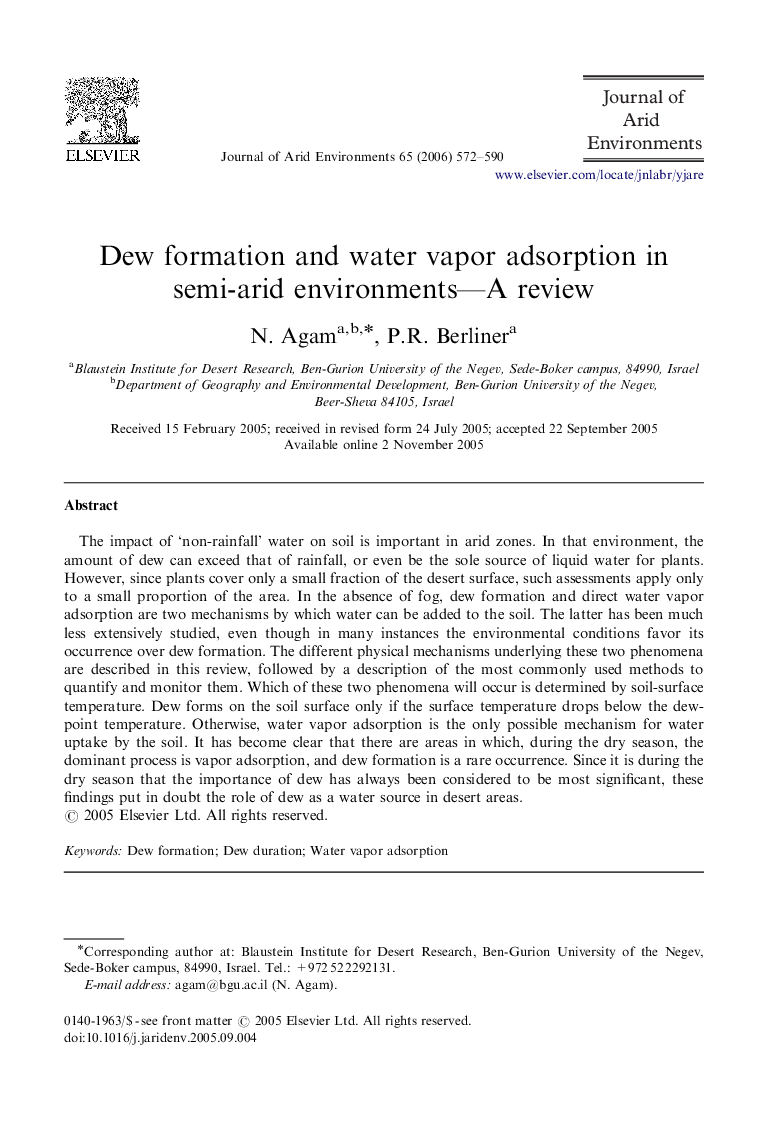| Article ID | Journal | Published Year | Pages | File Type |
|---|---|---|---|---|
| 4394630 | Journal of Arid Environments | 2006 | 19 Pages |
The impact of ‘non-rainfall’ water on soil is important in arid zones. In that environment, the amount of dew can exceed that of rainfall, or even be the sole source of liquid water for plants. However, since plants cover only a small fraction of the desert surface, such assessments apply only to a small proportion of the area. In the absence of fog, dew formation and direct water vapor adsorption are two mechanisms by which water can be added to the soil. The latter has been much less extensively studied, even though in many instances the environmental conditions favor its occurrence over dew formation. The different physical mechanisms underlying these two phenomena are described in this review, followed by a description of the most commonly used methods to quantify and monitor them. Which of these two phenomena will occur is determined by soil-surface temperature. Dew forms on the soil surface only if the surface temperature drops below the dew-point temperature. Otherwise, water vapor adsorption is the only possible mechanism for water uptake by the soil. It has become clear that there are areas in which, during the dry season, the dominant process is vapor adsorption, and dew formation is a rare occurrence. Since it is during the dry season that the importance of dew has always been considered to be most significant, these findings put in doubt the role of dew as a water source in desert areas.
